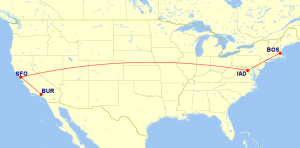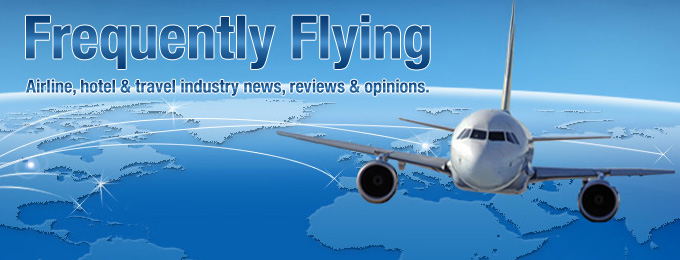I’ve been scanning the fares for a couple of weeks now searching for good mileage runs coming in around 3 cents per mile (cpm), but haven’t found any gems lately like I did last year. One fare did pop up last night that looked sort-of attractive, so I thought I’d take you through my process for constructing a mileage run.
First, I hunt through airfares originating from my hometown, Los Angeles. In addition to LAX, I also look at Burbank, Ontario and Orange County airports since I’d be willing to drive to any of them if the price was right (maybe even San Diego, too). There are great websites out there like Farecompare and Kayak, which make this process pretty effortless and convenient. To maximize mileage on a purely domestic run, I typically zero in on the East coast cities, and see United Airlines filed a fare tonight from Burbank to Boston showing a base of $202 round-trip before taxes and fees.
United (actually United Express/Skywest Airlines) only flies to San Francisco and Denver from Burbank, but that actually helps me out. The goal is to maximize mileage, so flying to Denver is too direct for this purpose. By flying to San Francisco first, I’ll rack up the minimum 500 miles because I’m an elite, whereas non-elite flyers would only accrue the actual mileage of 326. This also positions me further away from Boston than from where I started.
Next, while United does have nonstops from SFO to Boston coming in at 2,704 miles, I can actually add one more stopover, or transit point, on this fare to increase the mileage even more. The best option here is to fly through Washington Dulles (IAD) airport, and then take another short hop up to Boston to earn the 500-mile minimum again. This routing beats the nonstop mileage by 215 miles.

I would route the return in the exact same fashion, giving me a total of 6,838 miles on an all-in fare (includes all taxes and segment fees) of $268.20. This yields a cpm of 3.92 (airfare divided by total mileage). While not the greatest cpm on a historical basis, it might become more standard this year given the rising price of oil, and the airlines’ overall fare increases of late.
The other piece to constructing a mileage run is understanding the airfares and corresponding rules. There are often day-of-week, transit point, seasonality, ticketing, and other restrictions that can make it difficult to actually find routings and dates like I did for the example above. I’ll devote a future post to deciphering the fare basis codes, and hopefully shed some light on the logic of them. Happy flying!


Wish I could fly this MR with you! Fares ex-FRA are depressing!
@Matthew: I bet it’s a totally different world over there for fares. I think I’d go through mileage run withdrawal!
Darren,
Very Helpful, but can you go further into how you create that routing. Is it the default routing if you put BUR-BOS in .bomb or are you using a multi-city search on .bomb or another website?
@JamesORD: Yeah, I did leave off my most helpful tool! Sorry… it’s ITA Software, and has the quickest and easiest search capabilities out there. You’re right in needing to do a multi-city search, and once I confirm the fare on ITA, I book it directly on United.com.
Thanks for asking… it has given me more ideas to include in the fare basis post forthcoming.